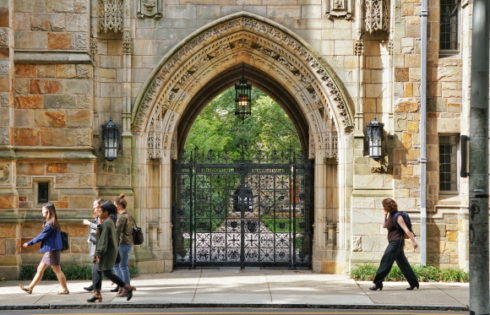
‘All-time high’ debt, but not the highest ever per borrower
Rising tuition costs have been driving student debt to unsustainable levels, partly because the federal government is not holding schools accountable, according to an annual report by an online student loan marketplace.
“Nationally, outstanding student loan debt sits at $1.52 trillion, making it the second largest form of consumer debt trailing only mortgages,” according to LendEDU’s fourth report on student loan debt by school and state.
LendEDU said it reviewed licensing data from an annual financial survey of 895 four-year institutions of higher learning. Peterson’s College Data, the source of the data, describes itself as “the benchmark for education reference.”
“[T]he average borrower from the Class of 2018 received their diploma and left campus with $28,565 in student loan debt, up from $28,288 that was owed by the average Class of 2017 borrower,” the report says.
Today’s outstanding student loan debt “is at an all-time high,” LendEDU Research Analyst Mike Brown told The College Fix in an email:
However, on a per borrower basis, there have been years where that average debt per borrower figure has been higher. This could simply mean that there are more borrowers than ever before, which would dilute the per borrower figure a bit.
The report calculated average borrower debt by compiling total debt at each school and dividing it by the number of bachelor’s degree recipients. (When those without student loans were factored, the debt averaged $16,649.)
Tuitions are rising because “there is no system in place to hold colleges accountable” and colleges feel free to raise prices when they see peers do the same, Brown said. The high demand for bachelor’s degrees, which are “often seen as a prerequisite to landing most jobs,” is another factor.
The report excluded data of transfer students, students who didn’t graduate with a bachelor’s degree, “parent loans” and “money borrowed at other institutions.”
The five states with the highest borrower debt averages were Delaware, Pennsylvania, Rhode Island, New Hampshire, and Connecticut, ranging from $34,144-$38,776.
This is no accident, according to Brown. Due to high living costs, “schools in the Northeast are consistently near the top when it comes to average student loan debt per borrower figures,” he told The Fix.
The five with the lowest were Utah, New Mexico, Alaska, California, and Nevada, ranging from $19,742-$22,600.
As for specific institutions, Bryant University, Mansfield University of Pennsylvania, The Culinary Institute of America, Baylor University and Texas Christian University were among those with the highest debt averages, ranging from $49,197-$54,067.
Appalachian Bible College, Alabama State University, University of the Incarnate Word, Bethel College and San Francisco State University had the lowest debt averages, ranging from $3,043-$6,069.
The report tracked state schools both “controlled” and “related” to their states, and both private secular nonprofits and private religious schools. It notes that the data may not be “completely accurate” because college officials provided state-level data to Peterson’s.
MORE: GOP senators offer bill to protect students’ religious freedom
LendEDU positions its “extremely valuable” data as a resource for “lawmakers and administrators alike” in holding schools “more accountable for egregious student debt levels.”
However, Congress would first need to reauthorize the Higher Education Act, which was created among other Great Society programs in the 1960s. It has been reauthorized eight times, but not since 2008.
LendEDU’s Brown noted that discussion around reauthorization has included a requirement for colleges to help graduates with loan debt if they show “a consistent pattern of high student loan debt levels.”
While congressional Democrats proposed a reauthorization under the “Aim Higher Act,” Republicans proposed the “Prosper Act.” Both parties seek to hold schools accountable for diminished “access to affordable 4-year degrees” and growing student debt, according to The Chronicle of Higher Education.
The Democratic version would boost the maximum Pell Grant amount by $500 and expand the reach of grants including the Federal Supplemental Educational Opportunity Grant.
The Republican version “would consolidate six existing federal loan programs into three areas: a grant program, a loan program, and a work-study program,” along with caps and limitations on each, according to the Chronicle.
Republicans are also eager to eliminate a loan forgiveness program that incentivizes graduates to enter public service by wiping their slate clean after 10 years of repayment. Democrats want to expand that program.
The Democratic version would centralize power by having the Department of Education ensure compliance with Title IV financial aid programs, instead of private accrediting organizations.
Republicans conversely want to assign current accreditors to focus more on student outcomes and develop their own system to identify “accredited programs or institutions facing challenges to accomplishing their educational-outcome and student-learning goals,” the Chronicle said.
MORE: Higher ed bill held up by dispute over accused students’ rights
IMAGE: WAYHOME studio/Shutterstock
Like The College Fix on Facebook / Follow us on Twitter






Please join the conversation about our stories on Facebook, Twitter, Instagram, Reddit, MeWe, Rumble, Gab, Minds and Gettr.